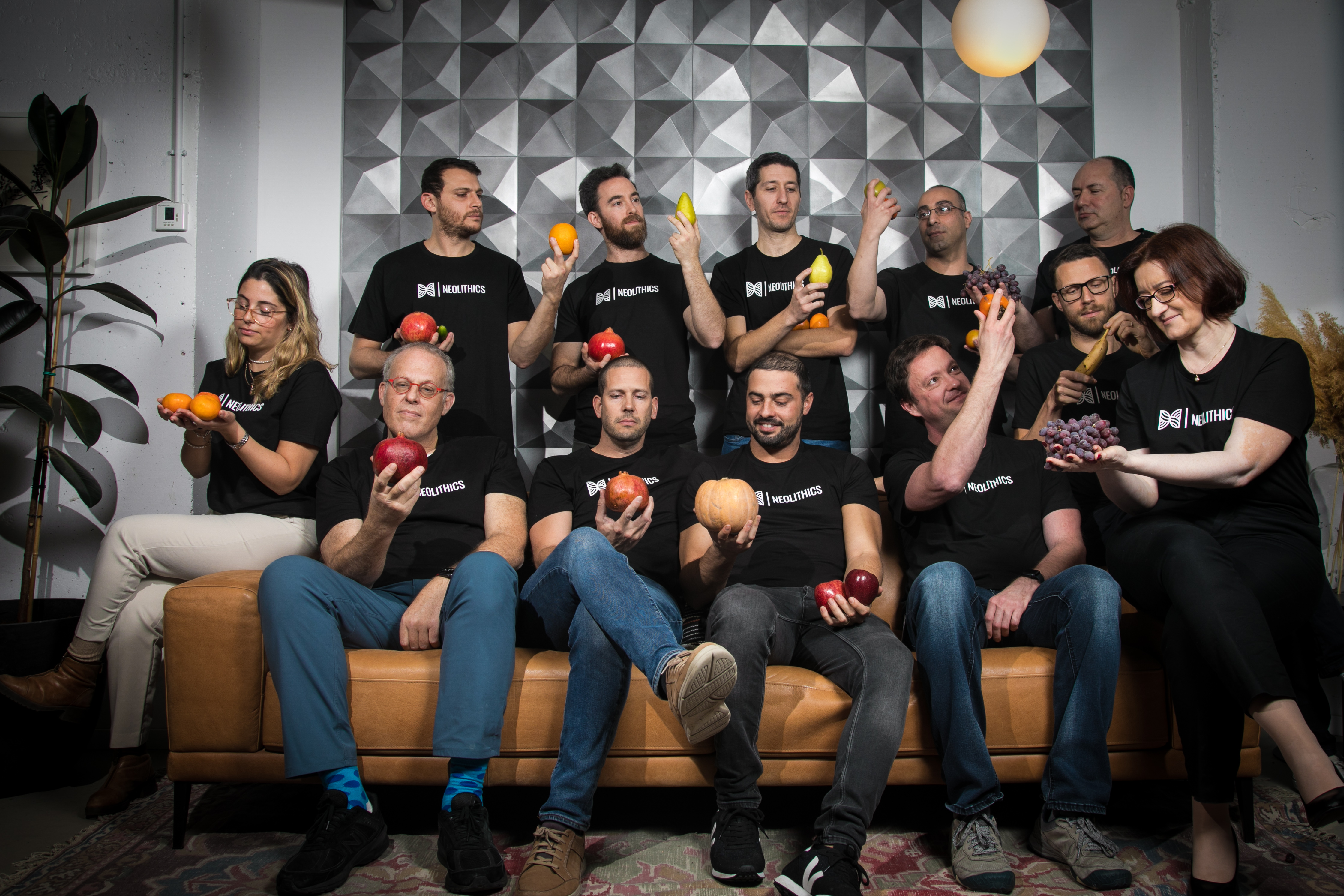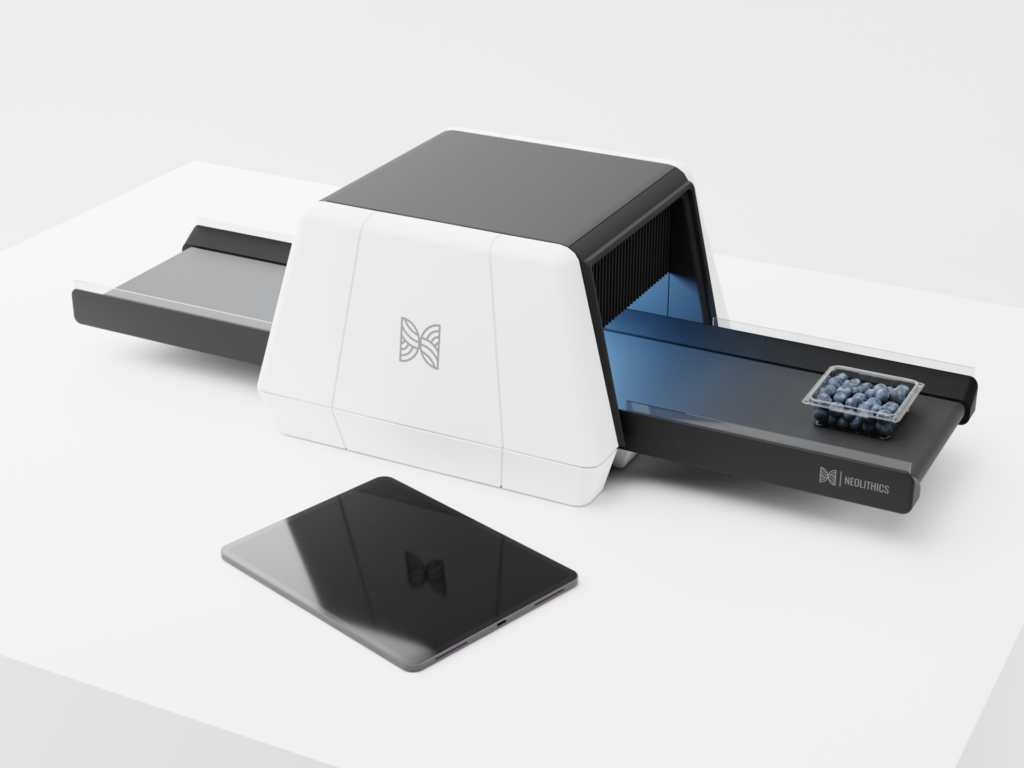
WHAT DO YOU SEE AS THE BIGGEST HURDLES FOR QUALITY CONTROL IN THE FRRESH PRODUCE INDUSTRY TODAY?
Supply chain disruptions caused by climate change, pandemics, and other factors have led to increased challenges in maintaining consistent quality in the fresh produce industry. Due to these disruptions, food producers are forced to source from alternative geographies. This randomness in sourcing can lead to products that may not meet the expected quality standards and durability, including safety concerns such as exceeding pesticide thresholds. It requires producers to adjust their strategies and deal with challenges like recalls, returns, and additional costs.
A notable example of how supply chain disruptions recently affected the availability of fresh produce is the serious shortage of fast-moving products like tomatoes and leafy greens in the UK during the recent winter. Climate change and spiking energy costs used in indoor farming led to a lack of supply for several weeks. Major retailers like Tesco and Sainsbury’s faced challenges in maintaining product availability due to the strain on the supply chain. This highlights the need for strategies to address disruptions and ensure a consistent supply of products.
What we see is that as we move downstream toward the end consumer, there is less transparency and understanding of the product’s quality. Consumers often make purchasing decisions based on appearance without knowing the internal flaws of the product. As a result, if they buy something visually appealing but internally flawed, waste occurs at the consumer level. Additionally, when quality issues arise due to inadequate control, it can result in recalls and potential safety concerns for consumers. It is crucial to address these challenges to help reduce waste and ensure quality and safety.
Then there is the challenge of destructive testing, which becomes more significant with longer supply chains and products that require ripening or have specific distribution timelines (climacteric fruits like mangoes, bananas, and avocados that are not picked at their ‘ready to eat’ condition and undergo a ripening process). As the timing of ripening and distribution is critical, this supply chain asks for destructive testing, which can result in product loss of up to 3.5%.
Lastly, the labor-intensive and complex nature of quality control is a large challenge. This requires dedicated attention and resources that could otherwise be used for packaging, shipping, and distribution.
HOW DOES NEOLITHICS’ CRYSTAL EYE TECHNOLOGY WORK, HOW DOES IT MINIMIZE FOOD LOSS, AND HOW HAVE YOU APPLIED IT IN THE FOOD INDUSTRY SO FAR?
Our Crystal eye technology revolutionizes quality control by providing fast, accurate, and touchless inspections. It eliminates the need for destructive testing, reduces waste, and ensures consistent quality throughout the supply chain. The technology studies the organic material’s spectral signature and utilizes advanced optics, computing power, and AI models to simplify decision-making for customers regarding inventory management and procurement. By using our technology, customers can streamline operations, improve logistics, and cut costs.
Traditionally, extracting the necessary parameters from a 10kg box of food products would take around 2 to 20 minutes. However, with our technology, this process is reduced to just 5 to 10 seconds. The time saved is significant, allowing customers to focus on larger sample sizes for better statistical analysis and decision-making. Moreover, our touchless process eliminates the need for destructive sampling, preserving the integrity of the products.
We have seen cases where an entire container of avocados weighing around 30 tons was rejected based on the quality assessment of just two units. This discrepancy arises because manual inspection is time-consuming and prone to human error. With our technology, we provide data-driven decision support, reducing disputes between suppliers and customers. By analyzing larger sample sizes, we can identify quality issues more accurately, minimizing food loss.
We offer two distinct ways to utilize our technology. Firstly, it can be employed to sort and perform quality control on the products during various stages of their lifecycle, including packaging and distribution. Secondly, it can provide customers with physical measurements of the products, such as size, color, firmness, physical attributes, and sugar content, which are essential for quality control. However, we also strive to go beyond these norms. For example, canned tomato processors may desire pre-processing measurements, while orange juice manufacturers might seek visibility into acidity and sugar levels prior to production. By addressing specific customer needs, we create tailored solutions to enhance their processes and outcomes.
WHY IS YOUR APPROACH SUPERIOR COMPARED TO OTHER QUALITY CONTROL TECHNOLOGIES?
Our approach to quality control technology sets us apart from others in several ways. Firstly, our versatile technology can be applied to a wide range of products and functionalities, providing tailored solutions across various sectors. Secondly, our high throughput capacity enables us to handle large volumes of inventory and analyze comprehensive data sets. This capacity makes us suitable for industrial-scale processes at distribution centers, packing houses, and other food processing facilities, distinguishing us from companies with limited insights based on small sample sizes. Thirdly, our focus on integration with third-party systems ensures seamless integration with existing infrastructure, simplifying the overall process for our customers. By collaborating with hardware integrators in the food industry, we combine their equipment expertise with our sophisticated software capabilities, revolutionizing quality control and introducing new product categories.
Our goal is to bring together expertise in food tech, food science, and deep learning to create innovative solutions that go beyond what current technologies offer. We take food tech seriously and have a dedicated team of food scientists who specialize in non-destructive testing and have extensive knowledge of organic materials and their behavior. This multidisciplinary approach, combining food tech research and software development, is what sets us apart and drives our value proposition.
WHAT IS YOUR VISION FOR THE FUTURE OF FRESH FOOD?
Our vision for the future of fresh food is rooted in the belief that the current state of the industry is highly inefficient and results in significant food waste. We see a world where food is more democratically distributed, with better utilization of resources. In the next five years, we hope to see significant improvements in this regard. One of the key aspects is the concept of upcycling, where surplus food from one location can be repurposed and balanced with areas that face scarcity. We believe that deep technologies can play a vital role in making this process more efficient and equitable.
Additionally, we need to leverage technologies that improve management, inspection, and decision-making without altering the natural form of food. Food waste is a huge problem, particularly with fruits, where we experience a 45% loss globally, and we need to do better. Better quality control methods have the potential to revolutionize the supply chain and ensure that fresh and nutritious food reaches consumers in a timely manner. Rapid assessment of product quality enables informed decisions and prevents unnecessary waste while also preserving nutritional value, contributing to overall consumer health.
WHAT ADVICE WOULD YOU GIVE TO A FOODTECH STARTUP FOUNDER TODAY?
The world is currently a challenging place to build and finance a business, and selling to customers is becoming increasingly difficult. In the past, food tech used to be a marginal tech business, but that is gradually changing. To make a food tech venture worthwhile, my advice would be to build things with a very clear path to execution and try to minimize risk as much as possible. Focus on practical solutions rather than nice-to-have features. It’s important to stay practical, especially in the FoodTech industry. Customers in this field are very traditional and risk averse. So, understanding what could go right and what could go wrong and aiming for practicality while building your business is crucial. Additionally, having resilience and the capacity to engage with the more challenging aspects of the core business is essential.

About Amir Adamov
Amir Adamov is a passionate foodie who brings his culinary expertise to the table. With professional culinary training and experience cooking for large groups of people, he excels in efficiently preparing delicious meals from any modestly available products. Amir also brings over 15 years of experience working in deep tech companies transforming traditional industries. Prior to founding Neolithics, Amir used to be a helicopter instructor and emergency medical services pilot. With an MBA in corporate finance and risk management, he takes charge of commercial parts, business development, and sales, bringing a strategic and business-oriented approach to the team.
“We saw that we have the opportunity to work with food, which is a big issue that will only become a bigger issue, and we fell in love with the idea,” explains Amir Adamov“. The goal was to start with a border technological approach and narrow down the best value proposition for the company. It involved a lot of legwork, working with different customers and projects until we figured it out. It wasn’t a dream that happened overnight; it was a general dream that we put into practice when we started engaging with customers face to face.”
About Neolithics
Neolithics is a company that specializes in optimizing fresh food distribution through hyperspectral image analysis and machine learning. Their image analysis AI enables the detection, classification, and sorting of crops based on their condition on conveyors, addressing the issue of inconsistent quality control and product losses in distribution chains. Also, by reducing the need for manual quality control, Neolithics helps save costs and provides standardized estimates of inventory value. Their customers include food processing companies, and supply chain operators.
